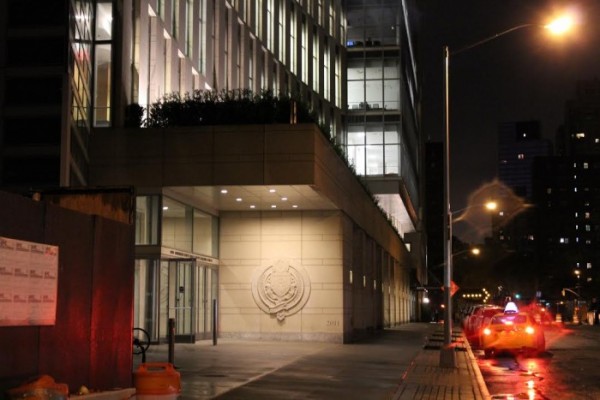Fordham Compared Against Peers
Fordham’s residence halls are exclusionary to transgender and gender non-conforming (TGNC) students. (CONNOR MANNION/THE OBSERVER)
April 22, 2016
Students have been comparing Fordham to other universities since they first considered attending. As a part of the accreditation process, Fordham University also took up this practice through comparing itself to its peer and aspirant institutions.
According to Robert Grimes, dean of Fordham College at Lincoln Center, “The idea of peer and aspirant institutions was an idea that was introduced 10 years ago when we were putting together the strategic plan that just finished.”
Grimes, however, “had some difficulty with the notion of peer and aspirant institutions, mainly because it’s so hard to compare one institution with another.”
“Does Fordham College at Lincoln Center, in its planning and its strategic outlook, want to be looking to NYU? No,” he said. “As students said early on in this discussion 10 years ago, ‘We came here because we didn’t want to go to NYU.’ And the two institutions were so completely different.”
[visualizer id=”28865″]
As a part of the peer institutions discussion, “We actually started thinking here about—not for Fordham University, but for Fordham College at Lincoln Center—who would be our peer school,” he said. “And for the peer school, what you do is you look at it and you say what are they doing right, and maybe we should be doing something like what they’re doing.”
Currently, Fordham is undergoing the accreditation process, administered by the Middle States Association of the Commission of Higher Education, of which Fordham is a member. The University recently received the Middle States Visitation Team’s report, which includes suggestions regarding diversity and resources. The University will receive the official statement from Middle States in June, which will state the status of accreditation for Fordham for the next eight years.
As a part of the process, Fordham compiled a Middle States Reaccreditation Self-Study and Decennial Review, which is available through the my.fordham.edu portal. In the Self-Study, Fordham’s peer institutions were listed as George Washington University, Boston University, Northeastern University, Syracuse University, Loyola Chicago and Villanova University. Its aspirant institutions were listed as Northwestern University, the University of Notre Dame, Georgetown University, Boston College and New York University.
[visualizer id=”28863″]
As a part of this comparison, the study drew attention to the institutions’ rankings regarding Peace Corps member production, federal work-study funds spent on service and community service participation and hours served. The sources consulted for indirect evidence to compare the institutions were the President’s Higher Education Community Service Honor Roll, the National Survey for Student Engagement, the ACJU Fact Files for 2008 to 2014 and the Washington Monthly 2014 College Rankings survey.
The study also included that “The task force sought appropriate benchmarks for service and engagement but was hampered by the lack of direct evidence” from both peer and aspirant institutions.
Jonathon Crystal, assistant vice president of Academic Affairs in the Office of Provost, said that the comparison to the peer and aspirant institutions is “a way for us to benchmark ourselves.”
“Fordham is unique, but looking at other schools can help us to figure out what we need to improve upon—what we’re doing well, what work remains to be done,” Crystal said. “So we have a list of schools that we can compare ourselves to as peers and as aspirants, one’s that we’re aiming towards.”
Regarding the peer institutions of Fordham as a whole, Grimes said that the University is similar to Loyola Chicago.
“They’re not as highly rated by U.S. News as we are, but if you just look at the basic structure, Loyola Chicago is quite similar to Fordham in that they have two campuses—a traditional campus in the north part of the city and a less traditional campus right smack in the middle of downtown Chicago,” Grimes said. “The big difference is Loyola Chicago also has a medical school. They have that third part to it.”
[visualizer id=”28857″]
“But for the rest of the university it’s probably about the most similar. Although in all of the U.S. News things we’re usually ranked well ahead of them.”
According to Grimes, the college that Fordham College at Lincoln Center is the most similar to is Barnard.
“We’re actually Barnard with men,” Grimes said.
“But if you look at the two schools, we’re about the same size; we’re both in major Manhattan institutions; we’re both liberal arts colleges with a couple of very strong performing arts programs; and our faculty teach predominantly in a liberal arts institution. But they can also there go across the street and teach at the graduate school at Columbia, and here we can go to Rose Hill and teach at the graduate school,” Grimes explained. “And so there were an awful lot of similarities.”












